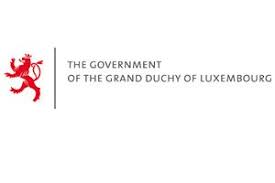PI-17. BUDGET PREPARATION PROCESS
ABOUT THE INDICATOR
This indicator measures the effectiveness of participation by relevant stakeholders in the budget preparation process, including political leadership, and whether that participation is orderly and timely. It contains the following three dimensions and uses the M2 (AV) method for aggregating dimension scores:
- Dimension 17.1. Budget calendar
- Dimension 17.2. Guidance on budget preparation
- Dimension 17.3. Budget submission to the legislature
IMPACT ON BUDGET OUTCOMES
An orderly budget process ensures that adequate time and information on procedures and assumptions are provided to allow budget proposals to be developed taking into account all important factors. This increases the likelihood that the process will support fiscal discipline, efficient resource allocation, and efficient service delivery. If there is insufficient information in advance of preparing budget proposals, or inadequate time to produce fully considered submissions, the chances of weak and illconsidered proposals increases, thereby undermining the potential results for budget outcomes.
INDICATOR MEASUREMENT GUIDANCE
17:1. While the MoF (or equivalent central government entity) is usually responsible for the annual budget preparation process, effective participation by other ministries or budgetary units as well as by the leadership of the executive, such as the cabinet (or an equivalent body), affects the extent to
which the budget reflects macroeconomic, fiscal, and expenditure and revenue policy priorities. Effective participation requires an integrated top-down and bottom-up budgeting process, involving engagement from every party in an orderly and timely manner, in accordance with a predetermined budget preparation calendar. The wider scope of participation of the legislature and citizens in the budgeting process is not covered here, but the legislature’s participation in the budgeting process—as representatives of the citizenry—is assessed in PI-18.
17:2. For the purpose of this indicator, budgetary units are those that are directly charged with responsibility for implementing the budget, in line with expenditure policies, and that directly receive funds or authorization to spend from the legislature. Government units that report to and receive budgetary funds through a parent ministry should not be included in the assessment.
17:3. Every part of the budgetary central government’s annual budget is covered by this indicator, whether it is integrated or uses separate processes. Ideally this is ensured through a single or unified budget process and related circular(s) covering total government revenue, recurrent expenditure, capital expenditure, transfers, specific financing, and so on. In cases where the process is split into different parts, as may happen with recurrent and capital budgets, the scoring requirements should be met for each of the separate processes.
17.4. ‘Participation is orderly and timely’ means that the relevant stakeholder participation in the budget preparation process is planned, structured, and implemented with sufficient advance notice for required actions to be performed within a realistic time frame—i.e., without delays that may affect the preparation of the budgetary units’ detailed estimates.
PEFA Handbook Volume 1: The PEFA Assessment Process – Planning, Managing and Using PEFA





